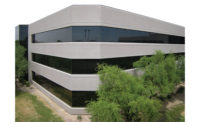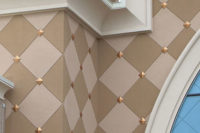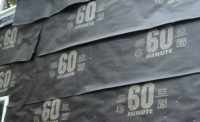You may remember these names: Sherlock Holmes, Philip Marlowe, Sam Spade, Colombo, and then of course, Clouseau and Gadget. They were fictional characters, all famous inspectors able to inspect and solve, formulate their findings, either through observations and experience or through bumbling pratfalls. Their findings were taken as gospel, irrefutable and highly regarded as fact even when delivered through the absurd and comic. Today, the EIFS industry is being independently regulated by a person of knowledge, a specialist of sorts, known as a special inspector.
EIFS was accepted into the International Building Code in 2008 for adoption into the 2009 code book. For the industry, it was a well-deserved win of a hard-fought battle. Coming out of a “dragging-through-the-mud war,” industry associations, professionals and manufacturers all rallied to rightly have EIFS acknowledged as a code-approved, high performance exterior cladding. The icing to the EIFS cake was the recent code mandate for continuous insulation to achieve a more rigorous insulating value, thus reducing energy usage and ultimately, carbon emissions. But they didn’t get here unscathed or without giving up something, that something being the code mandated watchful eye(s) of the special inspector.
Tested and Proven
EIFS is undoubtedly one of the most tested exterior cladding systems there is. Of course, all of the components must meet rigorous standards, with items such as bond strength, weatherability, vapor permeability and even drainage efficiency, joining in the arm’s length list of requirements.
As part of the well thought out submission to the code and in order to get accepted into the code, special EIFS inspections became a requirement. There are only two and keep in mind that these requirements may or may not be enforced by the local code jurisdictions.
ICC section 1705.15: All EIF system applications must be inspected with the exception of those installed over masonry or concrete walls or when EIFS is installed over a water-resistive barrier.
When EIFS is installed over a water-resistive barrier (over a sheathing substrate), the WRB coating must be inspected. The second one only applies to the WRB coatings.
Enter the special EIFS inspector (SI). This class of inspector is not part of the local jurisdiction, and is typically not employed as a code official or city inspector. Simply stated, there is a big responsibility heaped onto this class of special inspectors. It is important that these inspectors have what I refer to as “intimate knowledge” of the components, installation requirements and detail functions of EIFS systems in order to properly oversee and even govern the installation.
These special inspectors cannot be employed by the installing contractor, are typically hired as a third party entity, and may even be hired as consultants for the installation of EIF systems. The SI has the final say as to whether or not the EIF system is being installed properly. By and large this specialized group does a bang up job of inspecting the EIF system or WRB layer and are mostly conscientious and knowledgeable, professionals. But as with any group of construction specialists it is possible to have good intentions be misconstrued, or be given as new industry practices. Sometimes an overzealous inspector can stop a job completely costing contractors money and time.
The Origins
In order to fully understand how the SI was created we need to look back at the cloudy years in EIFS history, the years right after the debacle, when EIFS was shot at and hit. As part of a restoration to the truth about EIFS, industry professionals began an education blitz for three relevant groups; installers, professionals and a new class called inspectors. Specifically geared for the proper installations and intimate details of EIF systems, the education classes became instrumental in applicators doing things right. A list became available to the market at large, verifying that those listed had attended a two-three day seminar about everything EIFS, and had passed an exam. The first group was the installers. They were taught all of the specifics of an EIF system and how to install the system properly. Second were the industry professionals, who attended the same class, became listed as those who fully understood EIFS and its intimacies but were not necessarily installers. And third, were the professionals who were not installers and wished to become special inspectors. All three classifications were required to take the same educational session with the professional and inspector levels required to pass a more rigorous test.
As part of the development of this educational blitz, criterion was established for this group known as the EIFS special inspector and a new industry was born. Most of the criteria set in place were intended to make sure the manufacturers installation details, application instructions and the details illustrated on the construction documents were being adhered to and that the special inspectors maintained a level of professionalism and ethical behavior. What was not intended was for these individuals to suggest details and procedures beyond the tests established by the EIFS manufacturers, those outside of the time proven, successful practices being employed since EIFS was first invented. Let me share two examples;
The Real Standard
I was involved in a situation where the “completed” wall assembly was being tested for leaks in a mock-up wall section. The well intentioned had sealed the back side of the wall with plastic sheeting, the insulation and drywall had been removed, and a device was integrated to apply negative pressure to the assembly. A water hose was then used to shower water, not at a measured rate, on the outside completed surface to check for leaks. Fortunately there were none but the point is, the test was not an industry accepted or required test. Rather it was “invented” by the EIFS special inspector/consultant. There was a lot of cost and time given to this with no real measurable results or even a good answer as to why it was done.
Another time an EIFS inspector was reviewing the installation of the drainage detail at the bottom of a wall. The contractor was installing the detail per the manufacturer’s details and instructions. The inspector made a point of calling out what he thought was not an “industry best practice.” This inspector had felt the backside of the mesh, the backwrap, should also be encased in basecoat. He cited many instances of this best practice and touted it as being the industry standard. He added that it was his opinion that to not do it, could compromise the drainage capabilities of the system. Again, well intentions began a trail of doubt and added costs to defend the real industry standard that was based on the manufacturers tested systems.
These two examples were unique and immediate resolutions were achieved. I cite them as examples of actions based outside the facts and guidelines of the EIFS manufacturers, examples of “I have a better idea.” Having been in this industry for most of my adult life I wish to offer a few guidelines of my own;
As a plasterer or plastering contractor, you do not have a better way to reconfigure, add products or skip steps when installing an EIF system. The EIFS installation guidelines are well thought-out, tested for performance as a system, and when installed like the manufacturers state, will prove successful for many years. When the guidelines are adhered to, the system will perform as intended, always.
As an industry professional; if you don’t have actual trowel time there may be certain nuances you don’t know about. Sometimes minute changes in an application procedure may be required. Plasterers pick up many tricks during their years of pushing mud up and down walls. These nuances may appear non-compliant but may in fact meet the intent of the directions or requirements. Most plasterers are happy to answer questions and offer sage knowledge to explain these tricks. Good dialogue and thorough research can either justify the procedure or show if a “cheat” is being attempted.
As an inspector; see the first two bullet points above. You carry a heavy load of responsibility in that your knowledge or lack thereof can make or break a job. If you have optional details or other suggestions as a hired consultant/inspector, make them during the design period of the job not after the contractor is installing the EIF system. A good working relationship with the EIFS manufacturers and industry professionals lend well to your credibility. There’s an old saying, “you don’t know what you don’t know.” If you haven’t come up through the trades it doesn’t mean you don’t understand EIFS it just may mean you don’t know. Plasterers are your friends.
Even though EIFS appears to be a simple cladding, one that is without a lot of parts, there is a technological wonderland within the system itself. The energy saving attributes, higher performing drainage systems and the new technology of the products, all lend to the popularity for EIFS. It shouldn’t be overlooked that EIFS meets the true definition of Continuous Insulation and quite simply, is always energy code compliant. As my friend Brett used to chime; “Got EIFS?”
Side Job
EIFS
For a list of the entire testing required, one can visit the web pages of an EIFS manufacturer’s site and look at their specifications sheets. An industry recognized list can also be found at the EIMA Web site at eima.com/standards.





Report Abusive Comment